|
Sep
16
2024
|
|
Posted 1 years 123 days ago ago by Admin
|
|
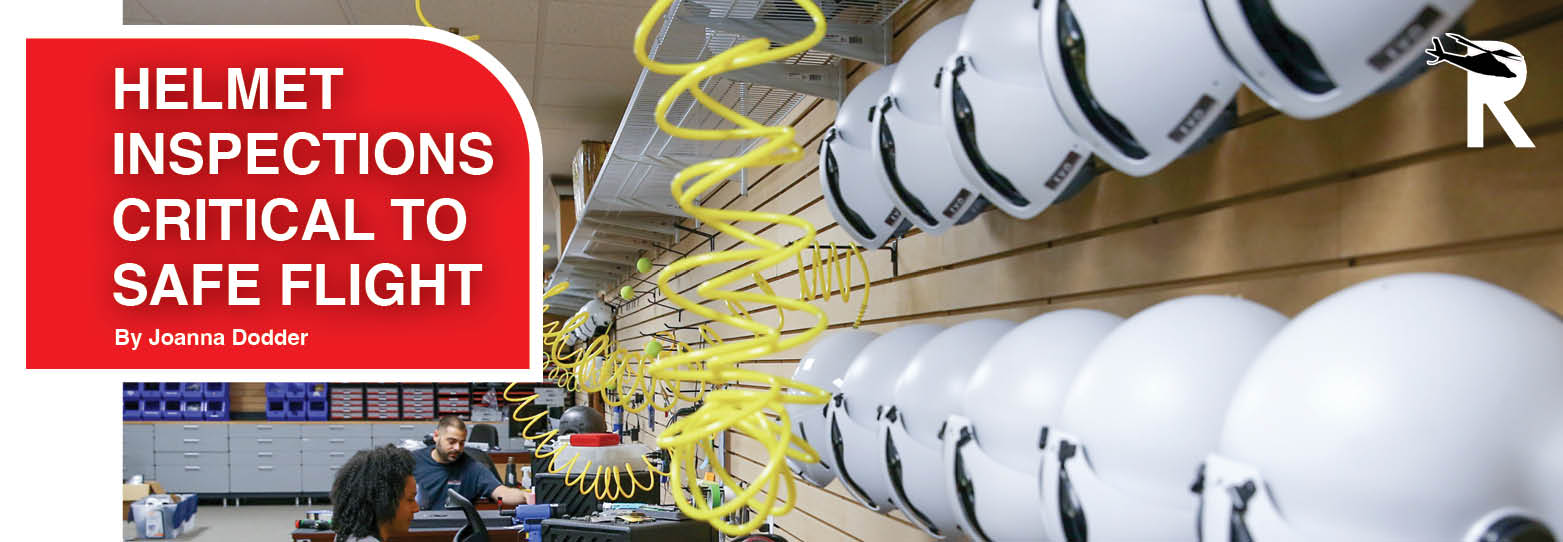
When it comes to flight helmets, Steve Mifsud has seen it all.
“I’ve seen helmets that were picked up by tornadoes and thrown a ways away,” Mifsud related. “Dogs have torn them up. They’ve even been used as bowling balls in Antarctica (by bored researchers). And one was burned on one side in a wildfire.”
Mifsud has seen all this damage on various helmets because people chose to repair them. So they sent their headgear to Evolution Helmets in Melbourne, Florida to get them restored to mint condition. “You see some crazy things,” concluded Mifsud, a helmet tech at Evolution Helmets.
Mifsud recalls totally refurbishing a 1990s-era Army helmet for one customer. About six months later, the pilot called Mifsud from the hospital to ask him to restore his helmet again – after he was a passenger in a rotorcraft that spun out and crashed. Luckily he walked away with a concussion and a dented helmet but nothing worse. “The helmet was up to OEM standards...and that definitely could have helped,” Mifsud said. The new styrofoam likely softened the impact when the g-force shoved the passenger’s head against the machine, he added.
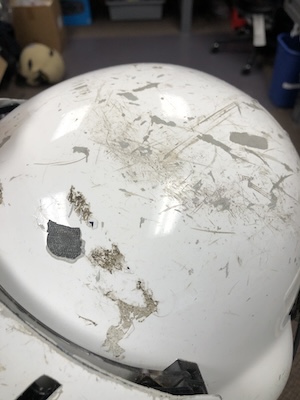
This helmet has damage beyond the superficial paint layer.
Mifsud especially enjoys restoring military flight helmets – sometimes for museums, sometimes for veterans themselves, and sometimes for the funerals of veterans. “Stuff like that means a lot,” he said. “I’ve had so many memorable conversations with veterans.”
Preflight checks and biennial inspections
Some flight helmet issues are a bit more subtle than an indented shell. That’s why Mifsud highly recommends that helmet owners read their manuals, check their helmets during each preflight, and send helmets into refurbishment and repair shops for inspection at least every two years whether they’ve personally spotted an issue or not.
“We can find something usually in every component after about a year and a half,” he said. “One way or another, they’re going to end up with a better helmet than the one they sent in.”
Evolution does all its sewing, wiring, modifications, etc. in-house. “We’re extremely capable with our in-house capabilities,” Mifsud assured. “It all comes down to speed, quality and cost.”
About half the helmet parts that need switching out within a few years are those that Mifsud categorizes as “hygiene” components – materials including liners, pads and mic muffs that gather human sweat and grime. Lenses also commonly degrade with use. “Lenses scratch, they get debris, they get dirty and then over time, they get foggy and eventually you can’t see well...just like a windshield on a car,” he added.
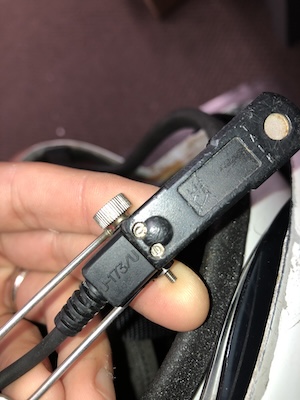
A microphone missing just one screw can cause communication failure.
While pilots can notice that lenses are getting damaged, other critical components are out of sight such as sheathing on communications wires that can slowly degrade over time. Pilots might get hints that the wires are degrading when they briefly lose sound. Or they might not realize they have a problem until they find themselves in the air without a way to talk to anyone on the ground. That’s a major reason why biennial inspections are crucial, Mifsud said; professional techs dismantle helmets to locate such hidden issues. You can’t see cancer inside you,” he said. “I can see what they can’t see. I’m the MRI, the lab results.”
Call or train too
Mifsud has no problem getting calls for assistance from people who are trying to troubleshoot problems. It could be something as simple as tightening one or two screws on the microphone. Others want to replace some of the simpler parts themselves, such as hygiene components. And Evo even sells CEP and CME kits online.
Then there are refurbishment projects that Mifsud advises pilots to leave to the experts, such as ANR systems upgrades – unless they are willing to risk $1,000 mistakes.
For those companies and pilots who really want to learn the more complicated procedures, Evo will qualify them in-house or elsewhere. That’s because Evo strives “to fully empower customers...so they can maintain a safe environment,” Mifsud said.
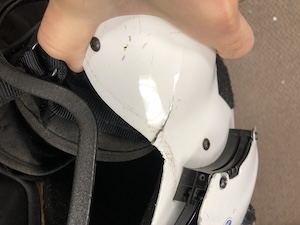
This shell is cracking in the temple area.
Evolution techs use light permeation to see deeper into the helmet components and spot issues such as fibers that are separating. If the issues are deeper than the gel coat and finish levels, techs will conclude the helmet needs replacement. They will not try to repair a cracked shell. Treatment, use frequency and location of use are all factors in the speed of helmet degradation, Mifsud said. Helicopter linemen might bump their heads almost daily, and that slowly breaks down the shell integrity.
Evolution offers price quotes in advance of refurbishment projects to maintain transparency. An Evo inspection including labor can cost as little as $75 plus parts. Breaking down and rebuilding a helmet costs more like $175. Work usually takes about two weeks unless a paint job is involved; then the time can expand to 4-6 weeks because the refurbishment project has to get in line with Evo’s new production helmets.
Add another $350 if you want Evo to strip and repaint a helmet. The company does in-house graphics for solid colors with company decals, but it also works with specialists on custom paint jobs at the request of customers. In those cases Evo strips the helmet to a raw shell, sends it to the custom shop for the paint, then puts it back together. Some of the custom painters who have worked with Mifsud include local artist Mike Savage of Savage Designs and Mark Keller of Helmet Effects in Pennsylvania.
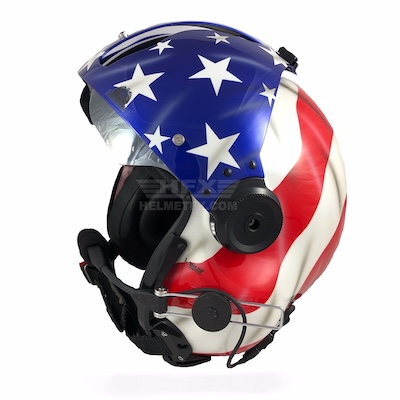
Sometimes new is best
Evolution can upgrade flight helmets with everything from new communications systems to improved noise reduction components to better safety features.
But Mifsud doesn’t necessarily advise people to use some older helmets in flight, even if they are refurbished, since base helmet technology is regularly being improved. After all, the first flight “helmets” were leather caps.
So in some cases, pilots may want a new helmet for a variety of reasons: they’re designed for better visibility with features such as a wider field of view; integrated communications systems for constant outside contact; better head protection with improved padding and secured features; lighter components that help reduce fatigue; advanced noise-cancelling features that reduce fatigue and increase eardrum protection; and advanced materials and construction that provide more durability.
Ignore at your peril
In all cases, Mifsud is quick to remind customers to inspect their headgear regularly so they can get repairs before they’re stuck in the air without a critical component. And that advice goes out to leisure pilots just as strongly as it goes out to medevac pilots, because they’re all basically doing the same thing.
“You’re in the sky in an upside-down lawn mower,” he noted with his usual wry humor.
READ MORE ROTOR PRO: https://justhelicopters.com/Magazine
WATCH ROTOR PRO YOUTUBE CHANNEL: https://buff.ly/3Md0T3y
You can also find us on
Instagram - https://www.instagram.com/rotorpro1
Facebook - https://www.facebook.com/rotorpro1
Twitter - https://twitter.com/justhelicopters
LinkedIn - https://www.linkedin.com/company/rotorpro1